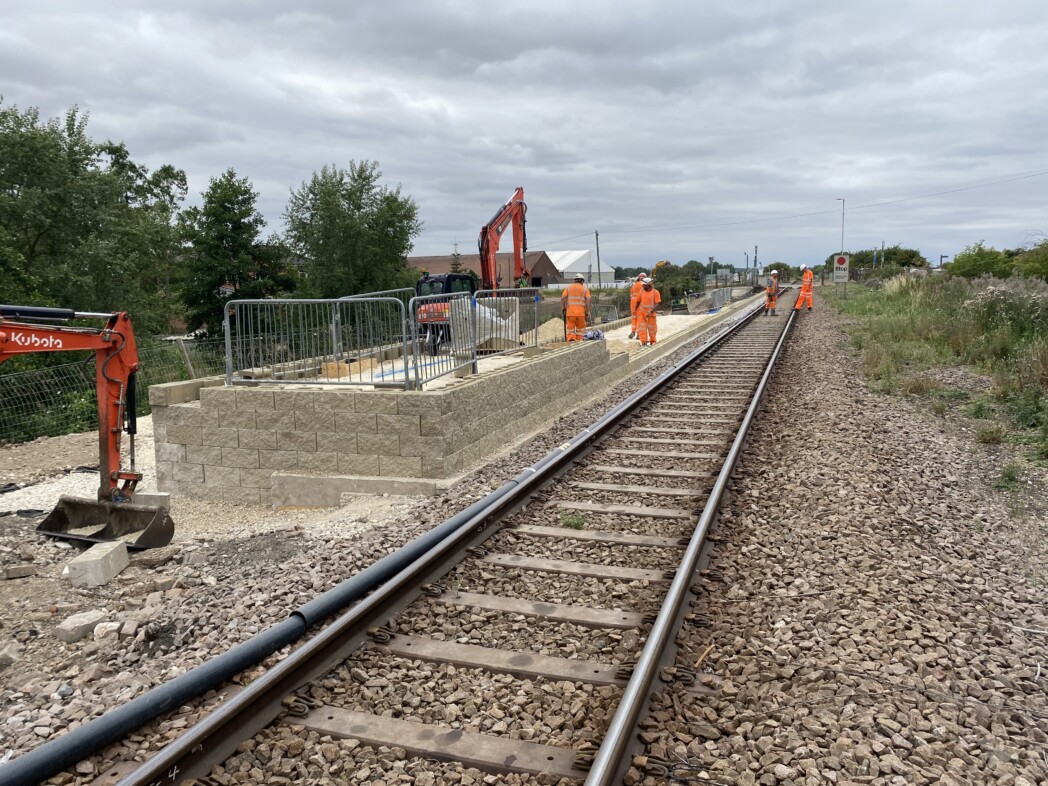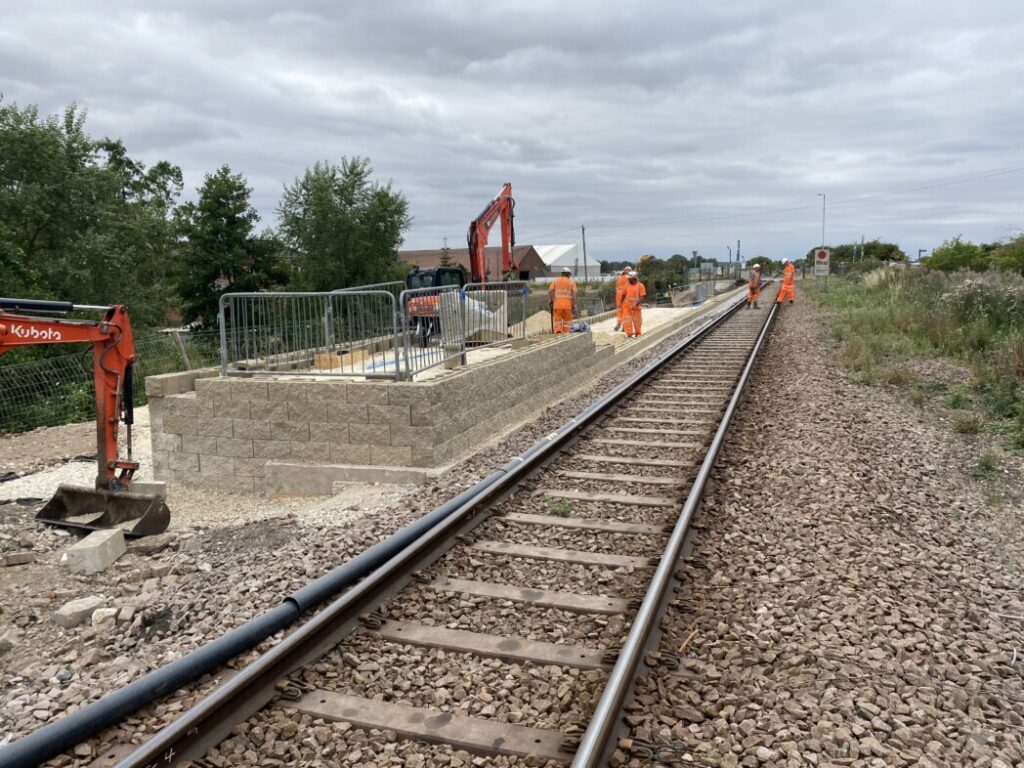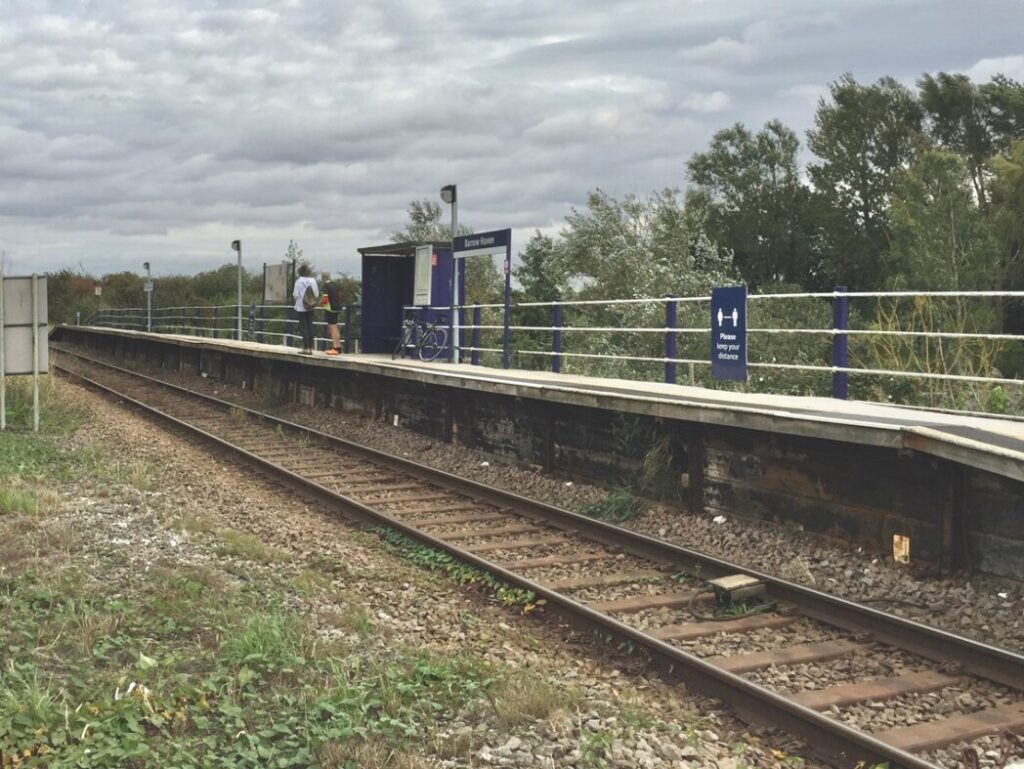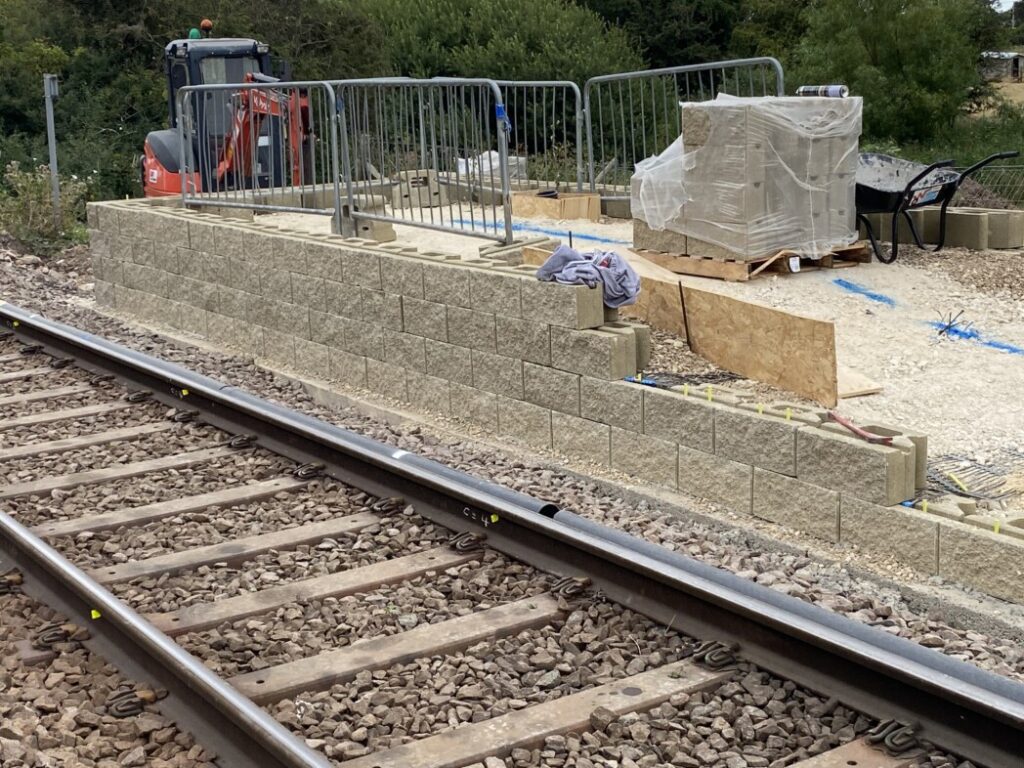
Engineering Innovation Strips Cost Out of NR Project
22/08/2022 - posted in Geoenvironmental, Industrial, Innovation, Rail, Uncategorised, Value EngineeringA eureka moment which saw the introduction of established civil engineering technology into the rail sector for the first time ever, has delivered major benefits including a six-figure cost saving.
Barrow Haven station’s existing platform on the banks of the River Humber in North Lincolnshire was seriously dilapidated, not wide enough and failed to comply with modern access requirements, prompting Network Rail (NR) to earmark it for a £1.3m reconstruction.
HBPW was asked to come up with solutions for the replacement and started with comprehensive ground investigations which confirmed that, as expected next to the Humber, ground conditions were poor. They also showed that the anticipated band of soft material was thicker than indicated in nearby boreholes, meaning piling to remove settlement issues would have been more expensive.
Alternative solutions were sought.
Partner Jon Livesey explains: “We either had to make the structure light enough to minimise settlement or flexible so that it could accommodate movement” he said.
“We narrowed it down to two contenders, the first being the use of a lightweight steel framed platform; not ideal because it would have still been susceptible to differential settlement with bigger maintenance considerations due to the marine environment.”
In the event engineers opted for a novel innovative solution, not previously applied to any rail station in the UK.
“We proposed the use of geogrid reinforced load transfer platform and reinforced soil walls for the platform construction. This type of soil technology is not new and is widely used within the civil engineering sector, but as far as we were aware, had not been used before to create a platform.
“There was some initial scepticism but, once the case had been made, everyone understood that the resulting structure would be inherently flexible: the polyethylene geogrid introduced into the engineering fill locked the particles together and, used alongside low-cost, dry laid, mass concrete wall facing blocks, effectively eliminated the threat of wall cracking in the event of settlement.
“It is a ‘heavier’ solution but, in itself, is flexible and therefore not prone to problems if there is any movement. Crucially for the asset owner, this system will result in far lower maintenance and hence whole life costs.” added Jon.
“We have taken proven technology and created a hugely cost-effective solution by removing the need to excavate in the track support zone, delivering an outcome that balances risk with budget and, in doing so, takes something resembling a six figure sum out of the budget.”
The new 60m long structure features a wider platform, better lighting, an improved access ramp and raised tactile pavings to help visually impaired passengers know when they’re close to the platform edge, making the station much safer for everyone.
East Midlands Railway has also contributed an additional £26,000 to fund other upgrades at the station, located on the Barton-on-Humber route, including a new waiting shelter, cycle racks and station signage as well as a solar-powered help point.



